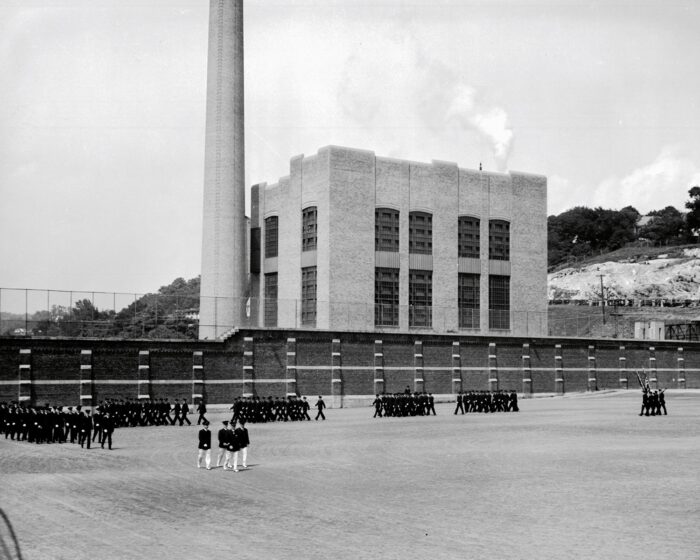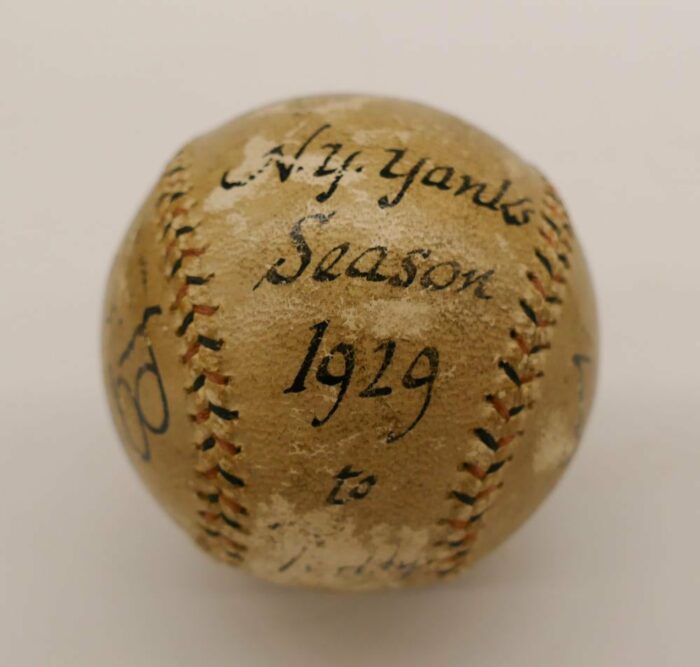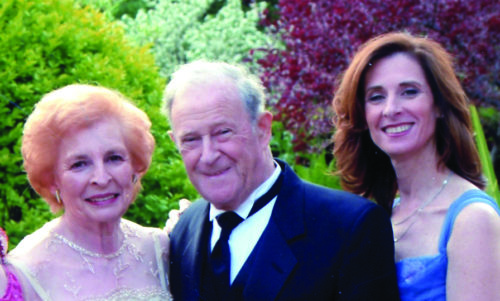
In 1929, the New York Yankees played an exhibition game in an unusual location. It wasn’t a major league stadium or even a famous park. And Babe Ruth, Lou Gehrig and their teammates weren’t playing a team known for its athletic prowess.
That game on September 5th was between the Yankees and the Ossining Orioles. The venue? Sing Sing Prison.The Orioles were the best team in the Mutual Welfare League, a.k.a. a prison team.
The Yankees toured the prison before playing in their iconic pinstripes. One man who was incarcerated at Sing Sing was too ill to watch the game, so Ruth autographed his cell wall. Apparently, the Yankees signed a number of baseballs and handed them out. One ball from that momentous game, signed by Ruth and Gehrig, was acquired by Sing Sing Prison Museum just before this past New Year at an auction in Seattle.

Photo Credit: MBA Auctions
Brent Glass is the Interim Director of the museum which will open in part in late 2020. He says that ball, which will be on exhibit along with its history, is significant to the museum because it connects several prison stories.
The ball will “help us tell the story of one approach…to try to encourage men who are incarcerated to partake in recreation, and to become integrated in society when they leave.”
It also helps tell the stories of Sing Sing in popular culture.
Glass says Warden Lewis E. Lawes, who was in charge of Sing Sing at the time of the game, implemented a progressive theory about the importance of rehabilitating the men under his watch in part by making life more interesting for them and giving them recreational and athletic opportunities. He was also connected to Hollywood; Lawes had written several screenplays including, “Over the Wall,” about a man incarcerated at Sing Sing of course.
Over the prison walls is where three Ruth homeruns landed that day in 1929. The Orioles wore hand-me-down NY Giants uniforms to face their professional opponents, but that didn’t help. No surprise– the game was a rout. The Yankees won 17-3. And they gave the men of Sing Sing a great show.

Photos courtesy of Sing Sing Museum
A New Cultural Institution
When we think about Westchester’s many cultural institutions, Sing Sing Prison does not come to mind. It doesn’t make any Hudson Valley must-see lists, yet. But that will change in this next decade, with the creation of the Sing Sing Prison Museum, opening in full in 2025. The museum’s founders are on a mission to make the museum one of Westchester’s great cultural tourism destinations.
You might go for the history, or you might go to gain a greater understanding of America’s prison complex. You might be interested in the more macabre aspects of the fabled penitentiary. Or you might go for the baseball.
The Sing Sing museum will be devoted to telling stories like the Yankees game, as well as the full story of the institution and its evolution. It will highlight stories of its brutal past and most infamous prisoners like Ethel and Julius Rosenberg, and those of the ordinary men incarcerated there, as well as their families, and the rehabilitation work occurring there in the 21st century. And the museum’s installations will be designed to encourage visitors to examine the greater social justice issues of the prison system.
“That’s one of our major goals for the museum is to challenge people to reimagine the criminal justice system and to take action to create a more just society,” says Glass.
Glass, who is also Director Emeritus of Smithsonian’s National Museum of American History, says all stakeholders will be included in the creation of the museum. “We want to tell the story of how incarceration has affected everyone at Sing Sing. We want to talk to the men who are incarcerated. What stories do they think are important to tell? We want to talk to people who have been victims of crimes. We don’t want to leave their stories out.” And he says the museum will include the stories of the people who have worked there over the years.
Why build a museum at Sing Sing now? Glass says, “Every chapter in criminal justice history has a few pages written at Sing Sing.” Unlike a popular museum like Alcatraz, Sing Sing is still operating. And he adds that its proximity to New York City and historic sites in the Hudson Valley makes it a perfect location. It will also bring tourism and millions of tourist dollars to Ossining. The museum founders estimate that 260 jobs in the museum and the wider community will be created, as well as 100 construction jobs.
The Sing Sing Prison Museum will open a preview center in 2020 at the Powerhouse on the prison campus. The Powerhouse provided electricity to the prison from the 1930’s to the 1960’s and will be repurposed with the construction of exhibition spaces, classrooms and a theater, as well as space for re-entry programs to help released prisoners acclimate to society.
When the full museum opens in 2025, Glass says visitors will be able to enter the historic cellblock. “We would break into the prison in effect through a secure corridor that would connect the Powerhouse to the historic cellblock which is about 100 yards south of the Powerhouse. The historic cellblock, built in 1825, would be the centerpiece of the visitor experience because it is an extraordinary ruin that nobody gets to see at this point.”
Sing Sing has a notorious past–including 614 executions in the 20th century–but it is working to bring a sense of humanity to its prisoners through a variety of arts and educational programs. Rehabilitation Through the Arts provides year-round theater workshops and performance to the prisoners of Sing Sing. They also run workshops in dance, visual arts, music and creative writing. Hudson Link for Higher Education provides college educational opportunities to prisoners through private funding. The correctional facility has a garden and a professional master gardener, Douglass DeCandia, who works with the prisoners. There are also programs for the families of prisoners.
Perhaps some of the families of early twentieth century prisoners might still have their signed baseballs from the 1929 game against the Yankees. Glass is hoping the museum might be able to acquire a few more. In the meantime, this one will be on view at Sing Sing’s new museum later this year, a wonderful testament to the idea that people who are incarcerated benefit from the occasional diversion and a reminder of what’s possible on the outside.
Six Tidbits About Sing Sing
- The 1,200 cells in the historic cellblock built in 1825 were seven-feet long, six-and-a-half feet high, and three-feet, seven inches wide.
- In the 19th century, some prisoners were subjected to punishments like the “shower bath,” similar to waterboarding.
- David Berkowitz, aka “the Son of Sam,” was incarcerated at Sing Sing.
- Some Hollywood movies filmed scenes at Sing Sing including “Breakfast at Tiffany’s.”
- Julius and Ethel Rosenberg were executed at Sing Sing
- Bruce Springsteen, Joan Baez, Harry Houdini and B.B. King have all performed at Sing Sing

